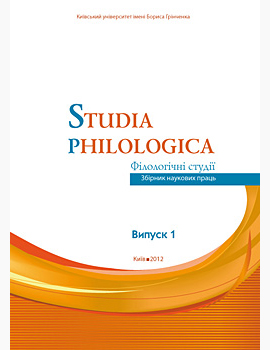“The ancient sad melody”: the formation of the “fin’amor” code in “The Romance of Tristan and Iseult”
DOI:
https://doi.org/10.28925/2311-2425.2018.11.20Abstract
Under the code we understand the system of signs and rules of their ordering, characterized by interpretive stability for centuries, which is fixed in the texts of culture and retains the communicative potential. Therefore, the «fin’amor» code is somehow organized by the dominant characteristics of courtly aesthetics of the Middle Ages, which arose as a result of existence in medieval Europe of a legend about unhappy love known as «The Romance of Tristan and Iseult».
The purpose of our article is to clarify the essence and specifics of the quintessential fin’amor code as a theoretical and literary concept, semantically formed on the basis of medieval tales about Tristan and Iseult.
«The Romance of Tristan and Iseult» contains the formal elements of the 11th century love novel at all levels of the text. Fundamentally new element is the presence of specific internal conflict. The love of Tristan and Iseult is a mutual unhappy love — «fin’amor», the leading code of courtly culture. In this regard, it is worth mentioning the love-for-suffering, which corresponds the essence of Christian asceticism. An important aspect is the intensity of the feelings of Tristan and Iseult: their love is strong as death and even stronger than death.
The formation of the fin’amor courtly code in «The Romance of Tristan and Iseult» preceded a significant preparatory period, when the structural elements, scattered from different sources, gradually coalesced into a single system of signs, which in the 12 century within the courtier life of the higher aristocrats becomes a classical interpretation of the semantic shades, that is, the rules of ordering. The essence of this code is mutual unlucky love, and the specific signs are the emphasis on suffering and gravity to death. Transforming for centuries «fin’amor» cultural code retains interpretative stability and communicative potential. Adhere to the system of axiological dominants of one or another of the next era, entering into a dialogue, the «fin’amor» code accumulates each time a paradigm of the courtly aesthetics values, concentrated in «The Romance of Tristan and Iseult», «the ancient sad melodies» about love and death.


